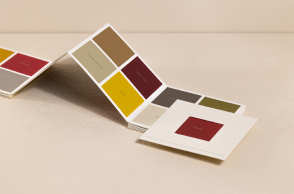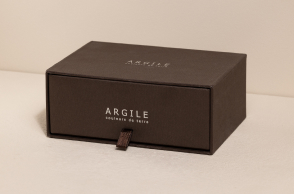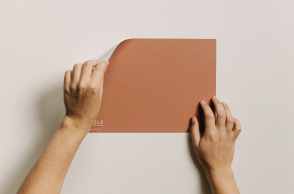Documentation
Commercial

Price List
Technical Chart
Technical and Safety Information
Technical Sheet
The Preparation Products
Interiors, walls, ceilings, woodwork
Biosourced Nature Range
Exteriors, facades, woodwork
Safety Information
The Preparation Products
Interiors, walls, ceilings, woodwork
Biosourced Nature Range
Exteriors, facades, woodwork
Certificates and labels
A series of external tests and certifications reflect the overall quality of Argile paint, both technically and environmentally. This philosophy is applied to all Argile paint formulation, at every stage of its design, production and use.
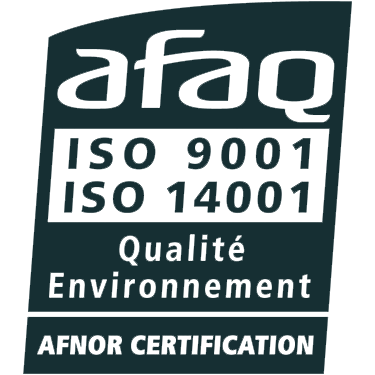
Certified and responsible industrial production.
Argile products are manufactured in a high-performance, French, industrial site, with ISO 9001 and ISO 14001 certification. These certifications attest to the quality of production, its consistency, the quality of industrial processes and its respect for the environment.
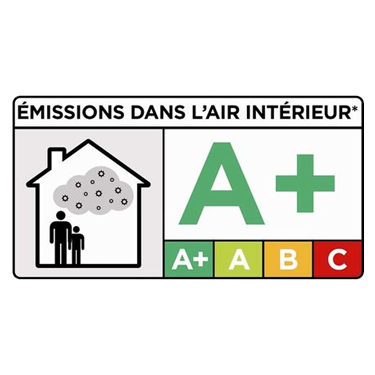
Improved air quality
This certificate outlines the level of solvent and petroleum-based additives present in paint. All finishes in the Argile range have low VOC content, with a maximum of 30g/l. (Argile Mat Profond as well as the entire Argile Nature Range contains a maximum of 1g/l.).
This compulsory certification awards 5 possible classifications from C to A +, for indoor air quality emissions. Each classification is identified following the measurements from an emission test, 28 days after the application of the product. All the products in the Argile range have been awarded the highest class, A+. The emission rates recorded for the Bio-sourced Argile Nature showed results that were well below the limits only 3 days after application.
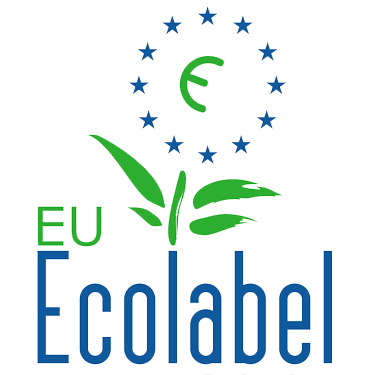
The European Ecolabel
The European Ecolabel outlines the ecological and technical performance of the product on an international scale. Several Argile products have been awarded this label for both their ecological advances (formulation, raw materials used, emissions and environmental impact) as well as their technical performance (opacity, application and resistance).
Various paint in both the classic range as well as 3 products from the Bio-sourced Argile Nature range, have aquired this label.
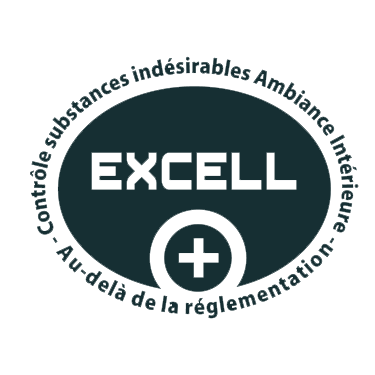
The Excell Plus Label (Excell+)
Carried out through a strict assessment of the chemical components and additives in the paint this label, attests to the non-toxicity of the products and their possible use near fragile and very sensitive materials.
Notably, the Argile Nature Velours has obtained this label.
The verified resistance of Argile products
The most established evaluation of wall paint resistance is the wet abrasion test (EN 13300). This assessment demonstrates the resistance of the paint film, especially during cleaning (washability).
This test contains 5 classes of resistance, from the finest (class 1) to the lowest (class 5). All Argile products fall within classes 1 and 2 (resistant and washable). Some of the most remarkable products: Argile laque satinée intérieure, Argile vernis mat, Argile laque mate, Argile nature velours… are marked as class 1 products (very resistant and washable)
Advice & Recommendations
To ensure depth, vibrancy and variation, each Argile colour is available in all of our different finishes. These should be chosen according to aesthetic preference, in relation to the space, light within it, and the surfaces they will be applied to. If you would like further advice and recommendations, please do not hesitate to contact us.
The Argile Range
The Argile Range and its qualities
The Argile finishes combine complimentary renderings: from very matt to satin and gloss.
Each finish interacts with the light differently, offering a refined and varying resonance with each of the Argile shades. All these finishes can be combined to highlight the different surfaces of a room.
How do you discern the sheen of different finishes?
The sheen of a paint is observed through the way in which it reflects light. This phenomenon is measured with a “gloss meter”. A standard procedure (ISO 2813) is used to establish the percentage of light reflected by the film of paint. Thus, theoretically, a true matt product would produce 0% sheen while a high gloss product would produce 100% sheen.
Resistance, wipeable and washable?
The resistance of products is generally certified by the wet abrasion test (ISO 11998). This test classifies products into 5 categories, with class 1 and 2 being the most resistant. Class 1 being washable products, class 2 being wipeable products. All the products in the Argile range are either class 1 or 2. There are also more subtle visual aspects of resistance beyond film abrasion, namely the ease of cleaning damage or dirt. Matt products are more sensitive to these last two features.
The Argile range: which product, which aspect, which surfaces?
The range is presented from the most matt to the most sheen.
- Interior products, classic acrylic range
ARGILE MAT PROFOND provides a deep matt aspect and a very fine structured grain with a mineral appearance when applied with a roller and a finely striped brushed grain when applied with a brush. Its sheen is less than 2%. Due to its deep matt aspect, it is very delicate and can be sensitive to dirt, rubbing and polishing. However, it is wipeable (class 2) and can be cleaned with a damp sponge. It is intended for walls in dry rooms, low traffic areas and works well for museums and scenography due to its beautiful rendition of the colours.
ARGILE MAT VELOUTÉ offers a smooth and velvety matt finish. The taut appearance provides a beautiful base for the different Argile shades. It has 3-5% sheen. This product is wipeable (class 2) but is more resistant than the Argile Mat Profond and can be cleaned with a damp sponge. It is intended for ceilings and walls in dry living spaces with regular traffic.
ARGILE LAQUE MATE provides an extremely resistant taut and smooth matt aspect. It has 5% sheen. This product is wipeable and washable (class 1). It is durable and resistant due to the resin (acrylic polyurethane), and not very sensitive to water and polishing. It is intended for walls, woodwork (doors, skirting boards), for dry and damp rooms (children’s rooms, kitchen, bathrooms), public places and commercial premises with high traffic areas.
ARGILE VERNIS MAT is clear and transparent matt varnish that can be used on raw materials (wood), old paint to reinforce them or painted over delicate matt finishes to reinforce them. This product is wipeable and washable (class 1). It has 7% sheen. The matt varnish is particularly suitable for reinforcing the Argile Mat Velouté finish especially in high passage areas such as (doors, baseboards, skirting boards, pillars, surfaces subject to water damage etc).
ARGILE SATIN COUVRANT offers a soft, light and elegant satin finish. It is smooth, taught and resistant. It has 10-15% sheen. This product is wipeable and washable (class 1-2) and is not very sensitive to water and polishing. Its opacity and appearance make it very suitable for decorating walls and woodwork, particularly in public and commercial high traffic areas.
ARGILE LAQUE SATINÉE INTÉRIEURE provides a light gloss finish. Surfaces decorated with this product appear smooth, taut, resistant and reflect the light, emphasising the brightness and intensity of the colour. It has between 20-25% sheen. This product is wipeable and washable (class 1). It is highly resistant and is recommended for all common surfaces, walls, woodwork, doors, skirting boards, furniture, especially in damp and high traffic areas (bathrooms, kitchens, etc.).
- Interior products, bio-sourced nature range, formulated with +95% vegetable oils
ARGILE NATURE MAT has a deep and structured matt appearance. It has less than 2% sheen. It is wipeable (class 2). Its subtle fine grain and mattifying aspect can be used to decorate different interior spaces. It is more sensitive to dirt and abrasion, although perfectly wipeable with a damp sponge. Should be avoided in high traffic areas and damp rooms.
ARGILE NATURE VELOURS has a subtle velvety matt appearance. It has 3-5% sheen. It is resistant wipeable and washable (class 1) and can be applied in all types of living areas, preferably in dry rooms.
ARGILE NATURE SATIN has a smooth and taut appearance. This product enhances the Argile colours by giving them a special satin shine. It has 20-25% sheen. It is water resistant, glossy, wipeable, washable (class 1) and is very suitable for decorating and protecting of woodwork and damp rooms.
- Exterior products, classic acrylic range
ARGILE MAT VELOUTÉ EXTÉRIEUR has a velvety matt, flexible, microporous appearance with a fine, even texture. This product is washable and weather resistant and is intended for decorating exterior facades and woodwork. It has 4-6% sheen.
ARGILE LAQUE SATINÉE EXTÉRIEURE has a taut, smooth satin appearance. It has a very flexible, microporous, washable, and weather-resistant film, this lacquer finish is intended for the decoration and protection of exterior woodwork. It has 25% sheen.
The different rooms, the different surfaces, interiors: which Argile finishes to choose?
For ceilings: for preparation, refer to the chapter “How to prepare a surface”(link). The most suitable product is Argile Blanc Plafond. It is a very matt, very white and insulating and is an ideal product for pastel-coloured ceilings. You can also use Argile Mat Velouté which is taut, smooth and can be used to create vibrant coloured ceiling. Use a natural bristle brush, a 12 mm textured polyamide roller or a 12 mm microfibre roller.
For a bedroom, a living room, living spaces: for the preparation, refer to the chapter “how to prepare a support”(link). All Argile finishes can be applied here, depending on the desired mattifying or satin effect. High traffic areas should be protected with resistant and durable products such as Argile laque matte, Argile laque satinée intérieur or Argile mat velouté reinforced with a coat Argile vernis mat, especially for skirting boards, doors, baseboards, frames etc…
For a kitchen, a bathroom, a damp room: for preparation, refer to the chapter “How to prepare a surface?” (link) Apply water resistant and washable Argile finishes should be used to protect and preserve the surface: Argile laque satinée intérieure, Argile laque mate or Argile mat velouté reinforced with a coat Argile vernis mat in high traffic or stressed areas.
For a hallway, common areas, public spaces: for preparation, see the chapter on “How to prepare a surface”(link). For walls, use Argile laque matte or Argile satin couvrant. For small surfaces that may abraded (doors, skirting boards, frames, baseboards, etc.), use Argile laque satinée intérieure, Argile laque mate or Argile mat velouté reinforced with a coat Argile vernis mat if necessary
For woodwork, doors, skirting boards, frames and windows: for preparation, refer to the chapter “How to prepare a surface”(link). Apply filler if necessary then sand and dust surfaces. Apply one coat of Argile primaire universel, then apply two coats of Argile laque mate or two coats of d’Argile laque satinée intérieure. Alternatively, apply two coats of Argile mat velouté reinforced with a coat Argile vernis mat.
For furniture: for preparation, see the chapter on “How to prepare a surface”(link). For the preparation: first apply filler, next sand down either painted or varnished furniture, finally dust. Then apply one coat of Argile primaire universel,then if the furniture is not subject to regular rubbing or abrasion, apply two coats of Argile Mat Velouté. Alternatively apply two coats of Argile Laque Satinée Intérieure or Argile laque mate to achieve a resistant durable finish. If the furniture is heavily used, reinforce it with a final coat of Argile Vernis Mat.
Usage
What tools should be used to prepare and paint different surfaces?
For substrate preparation: to penetrate and fill rough substrates, especially walls, apply Argile sous-couche de preparation with a polyamide or polyester microfibre 12 mm roller. For hard or smooth surfaces apply Argile primaire universel, with either a lacquer roller, a flocked foam roller, or a 6-7 mm polyester microfibre roller.
For small surfaces: the shorter the fibers on the roller, the smoother and tighter the finish will be. For doors, woodwork, furniture and frames, use a lacquer roller, a flocked foam roller or a 6-7 mm polyester microfiber roller.
For walls: use a textured polyamide or a polyester microfibre 12 mm or 10mm roller, which will provide good coverage, opacity and a smoother and more even finish.
For ceilings: use a textured polyamide or polyester microfibre 12 mm roller.
For woodwork: for furniture, use a flocked foam or microfibre 6-7 mm roller. Use a brush when painting small surfaces, frames, windows etc.
For facades: use a thick nap roller, such as a facade roller measuring at least 12 mm but preferably 16 to 18 mm.
Recommendations before painting:
Start by slowly stirring the paint pot before each application, with a clean tool (spatula). This slow manual stirring helps blend the product. Always generously stir the Argile vernis mat to produce the desired resistant mat coating. Clean tools with water. To prevent them from drying out between applications, wrap them in clingfilm.
For good opacity, apply the finishes with the recommended tool, applying generously and preferably cross hatching to achieve an even coverage. Opacity can be further increased by using tinted undercoats. Argile sous-couche de préparation and Argile primaire universel
can be tinted in light pastel shades from the Argile collections to heighten the desired colour.
Recommendations before painting:
Start by slowly stirring the paint pot before each application, with a clean tool (spatula). This slow manual stirring helps blend the product. Always generously stir the Argile vernis mat to produce the desired resistant mat coating. Clean tools with water. To prevent them from drying out between applications, wrap them in clingfilm.
For good opacity, apply the finishes with the recommended tool, applying generously and preferably cross hatching to achieve an even coverage. Opacity can be further increased by using tinted undercoats. Argile sous-couche de préparation and Argile primaire universel
can be tinted in light pastel shades from the Argile collections to heighten the desired colour.
How to prepare an interior surface?
Before being painted, a surface must be solid, clean, dry and consistent.
Preparing rough walls: for rough surfaces, such as plaster, plasterboard, etc., proceed with the necessary filling and plastering of the area. Once smooth apply a first coat of primer and allow to harden. Create a consistent base with Argile sous-couche de préparation.
Preparing wood substrates: before any product application, the wood must be sanded, cleaned, repaired, and filled if necessary. On soft raw wood, the finishes can either be applied directly, or can be applied after one coat of the Argile sous-couche de preparation. On hardwood, wood-based materials (melamine, laminated), varnished wood or old lacquered wood, sand and then clean the surface before applying one coat of Argile primaire universel. On old or damp woodwork, with lots of tannin or resin an external solvent-based primer should be applied beforehand.
Preparing rough, smooth and hard substrates: when applying on plastic, plastic derivatives, PVC, wall tiles, non-ferrous metals, clean then degrease the surface and sand if possible. Lastly apply one coat of Argile primaire universel.
Preparing a previously painted surface: when a surface is painted, it is important to ensure that the old coating is sturdy and solid. If it is peeling, blistering, or cracking, these poorly adhering sections must be scraped or mechanically sanded and completely removed. Next the areas must be filled and repaired. If the paint is old and hard such as aged gloss or satin paint, carefully sand the surface and apply a coat of Argile primaire universel. Regarding plastering, raw surfaces, old absorbent or aged matt paint apply a coat of Argile sous couche de preparation. If the surface is painted in an old matt or a slightly satin paint in good condition, the Argile finishes can be applied directly, after preparation.
The appropriate conditions for painting indoors?
When painting, it is important that you take into consideration your environment: A room should be between 10°C and 25°C. If the weather permits, the rooms should be ventilated and the humidity level should not exceed 60%. To avoid any ambient humidity, painting should be avoided when it is raining or in foggy conditions. The surface or support must always be dry at the time of application, and the humidity inside the surface should be checked.
Preparing and painting the exterior :
- Woodwork:
Preparation and finishing for wood covered in aged paint, varnish, or stain: remove peeling, blistering, or cracking section by stripping, sanding and dusting the area. Apply a coat of Argile primaire universel, then two coats of Argile laque satinée extérieure or Argile laque mate.
Preparation and finishing for rough hardwoods: Degrease the surface, sand and dust. Apply a coat of Argile primaire universel, then two coats of Argile laque satinée extérieure.
Preparation and finishing of soft raw wood (pine): Degrease the surface, clean, sand and dust. Apply two coats of Argile laque satinée extérieure or Argile mat velouté extérieur, without an undercoat. If necessary, apply a diluted coat of the product which will act as a primer (2-3% diluted with water).
Preparation of wood with tannins or resins: apply an anti-tannin product or a solvent-based impregnating glaze.
- Stone, brick, plaster or old paint:
Remove any peeling, blistering, or cracking by stripping the area and refilling if necessary. Then apply two coats of Argile mat velouté extérieur.
- Raw, absorbent, or matt painted surfaces:
Remove any peeling, blistering, or cracking by stripping the area and refilling if necessary. Then apply one coat of Argile mat velouté extérieur diluted with water (3-5%), then two coats of Argile mat velouté extérieur.
- Powdery or eroding surfaces:
Remove any peeling, erosion, or cracking by stripping the area and refilling if necessary. Then apply an appropriate fixative (preferably solvent-based), followed by two coats of Argile mat velouté extérieur.
- Other exterior supports:
On all hard substrates such as PVC, plastics and hard woods, non-ferrous metals, old varnishes, old glycerophtalic or polyurethane paint, apply one coat of Argile primaire universel followed by two coats of Argile laque satinée extérieure or Argile mat velouté extérieur.
